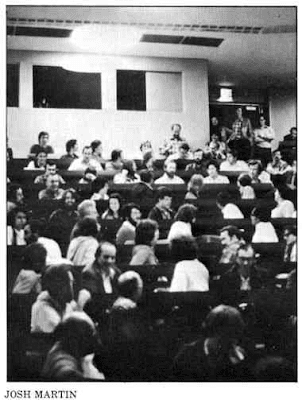I recently attended several events during LA Startup Week and, even though I live in Los Angeles, I was surprised at the scope of the LA tech community. RepresentLA maintains a multi-layer, interactive map showing that greater Los Angeles is (currently) home to 1,616 self-defined Internet startups along with accelerators, incubators, co-working spaces, investors, consultants and hacker spaces that support them.
 |
| Over 1,000 startups and organizations that support them |
The startup week featured dozens of sessions with how-to talks, demos, pitches by organizations that support startups, etc. Kevin Winston of
Digital LA kicked the week off with an overview presentation on the startups, the organizations that support them with capital and services and companies like his that support the community. He said only New York City and Silicon Valley have more startup activity than LA and he made the point by listing examples of successful companies, big buyout deals and the numbers of startups and supporting organizations.
 |
| Kevin Winston presenting an overview of the startup ecosystem. |
Winston’s company,
Digital LA, organizes events and tracks the Los Angeles startup scene – kind of a digital chamber of commerce.
Represent LA lists 30 accelerators, 44 incubators and 52 co-working spaces. The
difference between accelerators and incubators can blur, but both are intended to help startups get off the ground. Accelerators provide space, mentoring and capital to startups in return for equity in the company. They typically admit a cohort of companies for a limited time – perhaps ten companies for four months -- then admit a new cohort.
Incubators are similar to accelerators, but companies may come in at an earlier stage – accelerators often want a company that has a product and is generating revenue – and they are more flexible on the time the company stays in the incubator.
Note that some of these are focused on a specific industry – for example the
LA Dodgers' accelerator focuses on sports related applications.
The services provided by co-working spaces also overlap with those provided by accelerators and incubators. In a co-working space, you pay rent for the facilities you need and hopefully meet people with common interests and complementary skills.
Some of the startup week events were held at the
Cross Campus co-working space, shown below. Cross Campus will rent startups everything from a virtual office – just a mailing address and the right to schedule meetings or demos – to a suite of ten or more offices. A full-time dedicated desk rents for $500 per month.
 |
| The Cross Campus co-working space |
The open space and list of amenities conveys the startup culture and values – here are some of the amenities: 7-times filtered Flowater, free craft beer, standing desks, only low VOC cleaning products used, weekly on-site massage therapist and, of-course fast Internet connectivity. (I'm a misfit – had to Google "low VOC cleaning products").
My guess is that the most valuable thing one gets out of participation in a co-working space, accelerator or incubator is meeting people with complementary interests, values and skills.
Los Angeles also has willing investors. The Represent LA site lists 72 angel and venture capital investors and Winston gave examples of a number of high-valuation investments during the last year.
There are also 17 hacker spaces open to hardware startups and 287 consultants – offering technical and business assistants. (Many of the latter also offer their services as accelerator and incubator mentors).
If you would like to keep up with the happenings in Los Angeles, subscribe to the newsletters and event listings at
Digital LA and the organizations that hosted the week's events:
Cross Campus,
General Assembly and
Expert Dojo.
I was surprised by number of startups and organizations that support and finance them in Los Angeles. The emphasis was on making money from startups – more MBA than hacker. The business emphasis reminded me of athletes who dream of playing professionally in the big leagues – I wonder how many of the startups will be around in a year.
The week also reminded me of the early PC days in Los Angeles and Silicon Valley and of a meet-up in Venice, CA that may have marked the beginning of the LA tech community, so I wrote
a companion post on those times.
-----
Update 12/11/2015
Mayor Eric Garcetti launched an initiative aimed at upgrading the Los Angeles Internet infrastructure soon after his election and it may pay off. AT&T has announced vague plans for fiber rollout and, more interesting, Google is considering Los Angeles for their 1 Gbps Google Fiber.
Google Fiber is an important asset, so Google can negotiate for concessions, but the city has some negotiating power too. One of Google's goals is to spur the development of unique applications that require high-speed connectivity, which the Los Angeles tech startup community and entertainment industries may very well invent. For more on Google Fiber and their consideration of Los Angeles,
see this post.






















